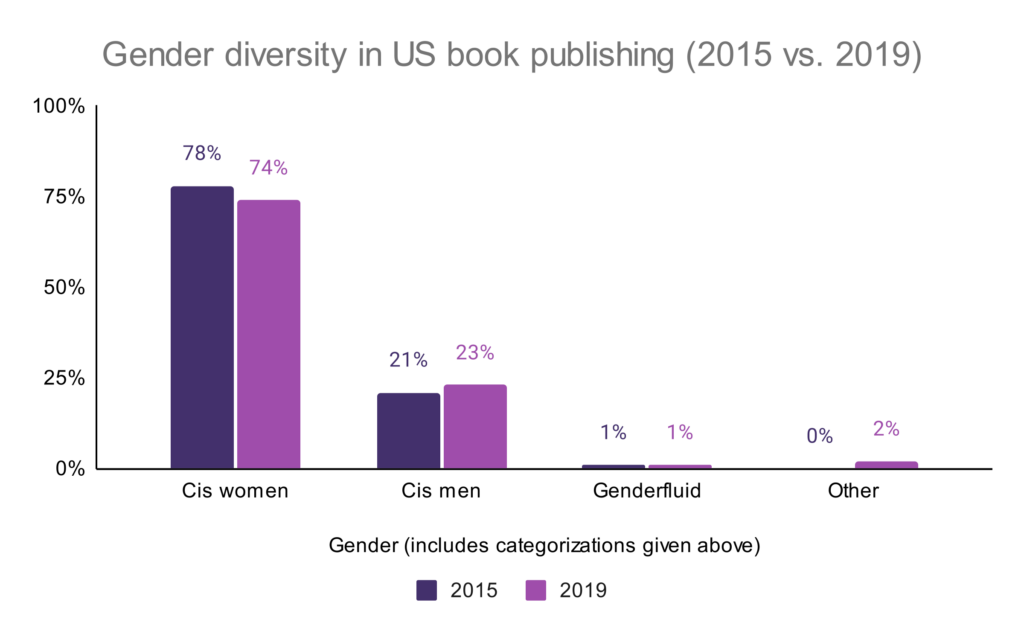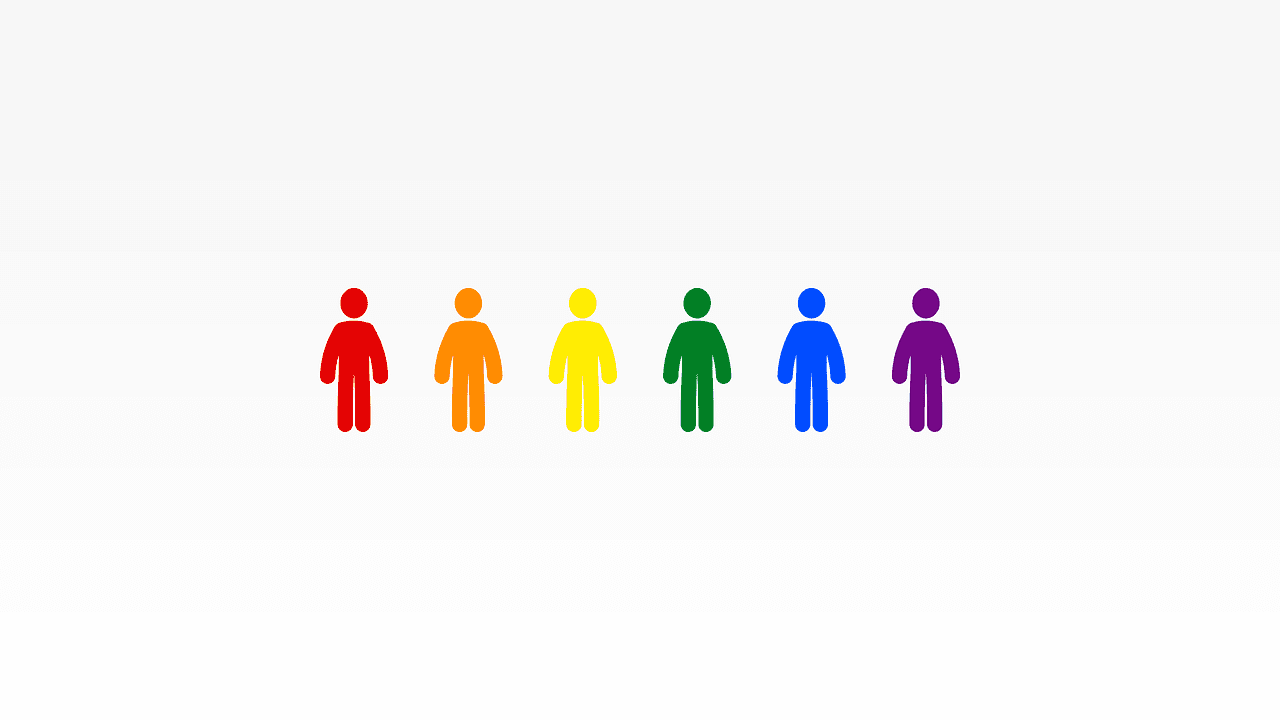- Between 1950 and 2018, 95% of American fiction books published were written by white authors.
- Author diversity has since increased but white writers are still over-represented.
- Non-hispanic white authors wrote 89% of the books analyzed for the year of 2018.
- As of 2020, 75% of industry respondents claimed their book publishing employer had made efforts in the last year to increase diversity and equity.
- Just 50% of publishing employees where DEI initiatives had been introduced believed it would result in real change.
- As of 2021, Erroll McDonald (VP & Exec. Editor: Alfred A. Knopf) claimed more people of color were given senior publishing positions within the last year than in decades.
- However the entry-route to these positions was often to enter the industry from the outside.
- As of 2021, more than 52% of those in publishing executive leadership were women in the UK.
- This increased to 56% for senior management positions.
- UK ethnic minority group representation has increased to 15% (excluding white minorities).
Find out about listed black-owned publishing companies in the US and UK.
Diversity in US book publishing
- 95% of American fiction books published were written by white authors between 1950 and 2018.
- Despite increasing author diversity, white writers are still over-represented.
- For the year of 2018, non-hispanic white people wrote 89% of the books analyzed.
- As of 2020, 75% of respondents in the industry claimed that their employer had made efforts in the last year to increase diversity and equity.
- Despite these findings, around just 50% of employees where DEI initiatives had been introduced believed it would result in real change.
- Erroll McDonald (VP & Exec. Editor: Alfred A. Knopf) claimed in 2021 that more people of color were given senior publishing positions within the last year than in decades.
- A drawback however was that the entry-route for many was to enter from outside the industry.
- Tracy Sherrod (Editorial Director – Amistad) noted a “correlation between the number of people of color who work in publishing and the number of books that are published by authors of color”.
- As of 2020, more than 50% of the 10 most recent books to receive the National Book Award for Fiction were authored by people of color.
Racial diversity in US book publishing
- As of 2019, white/caucasian industry respondents represented 76%. This is a drop of 3% since 2015.
- 7% was made up by asian/native hawaiian/pacific islander/south asian/southeast indian respondents.
- 6% was made up by latinx/latino/mexican respondents.
- 5% was made up by black/afro american/afro caribbean respondents. This is a 1% increase since 2015.
- 3% was made up by biracial/multiracial respondents.
A chart to show racial diversity in US book publishing is given below:

Gender diversity in US book publishing
- As of 2019, 74% of respondents in the industry were cis women. This dropped 4% since 2015.
- 23% of respondents were cis men. This is an increase of 2% since 2015.
- Genderfluid/non-binary/genderqueer/non-conforming represented 1%.
A chart to show gender diversity in US book publishing is given below:

Orientation diversity in US book publishing
- As of 2019, 81% of industry respondents were straight/heterosexual. This has dropped 7% since 2015.
- 10% of respondents were bisexual/pansexual. This represents an increase of 6% since 2015.
- 6% of respondents were gay/lesbian. This has dropped by 1% since 2015.
- 1% of respondents were asexual.
A chart to show orientation diversity in US book publishing is given below:

US diversity in book publishing by disability
- As of 2019, 89% of industry respondents reported that they did not have a disability.
- In total, 11% of respondents did report having a disability.
- The number of respondents with a disability has increased by 3% since 2015.
- This increase in the number of respondents with a disability during the period could also be attributed to an increased recognition of disabilities caused by mental health issues.
Diversity in UK book publishing
- As of 2021, more than 52% of those in executive leadership in the industry are women.
- For senior management positions, this increased to 56%.
- Within the publishing industry, ethnic minority group representation has increased to 15% (excluding white minorities).
- 13% of industry respondents identified as lesbian, gay, bi or preferred to self-describe their sexual orientation.
- In 2017 this was just 5% but the figure has grown each year.
- Trans industry respondents represented 1%, in line with UK population statistics.
- People with a disability within the industry have increased to 13% in 2021, from 2% in 2017.
- There is an overrepresentation from privately educated individuals (19%) and those who hold a degree (83%), when compared to the UK population.
#PublishingPaidMe
- In 2020, a Twitter movement was created by US author L.L. McKinney to highlight pay disparities between Black and non-Black authors.
- Once viral, a Google document was created so that writers could crowdsource and share information about advances.
- Within a week, the document contained information for more than 2,500 books.
- This document showed that well-recognized black authors were earning small advances when compared to some unrecognized white authors.
- Jesmyn Ward is a black author who is also the first woman to win two National Book Awards for fiction.
- After winning her first in 2011, she tweeted that she had to heavily negotiate to receive a $100,000 advance.
- N.K. Jemisin, is a black author and the only person to win a Hugo Award three times in a row.
- For her trilogy “Broken Earth”, she received an advance of $25,000 for each volume.
- For “Great Cities”, her follow-up, she received an advance of $60,000 for each volume.
- Due to the movement, multiple white authors commented that they were shocked to find out that they received high advances when compared to black authors.

